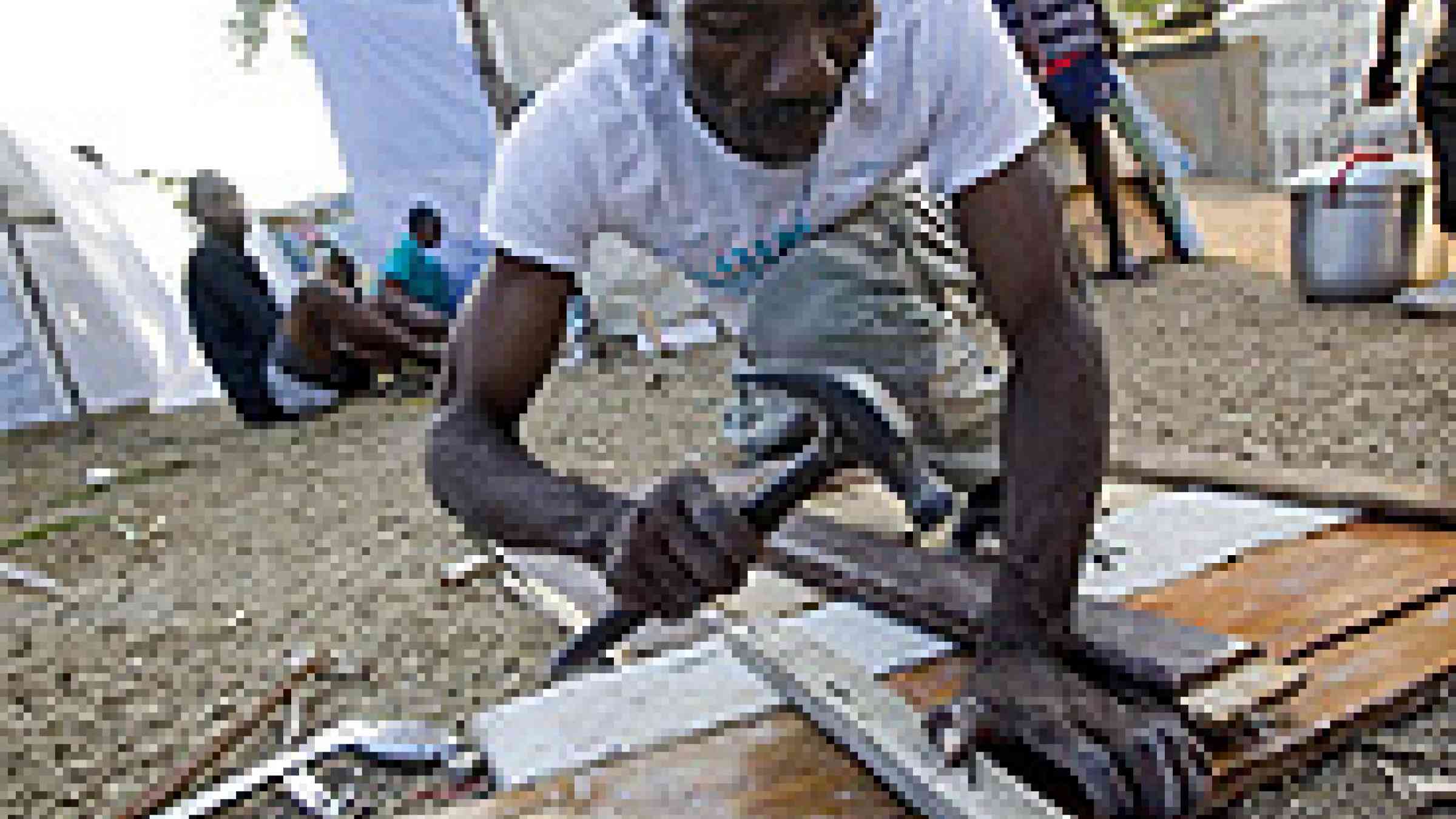Ten percent of relief aid should be allocated to building safer houses, hospitals and schools

As relief continues to be the main priority for thousands of Haitians who have been affected by the 7.0 magnitude earthquake in Port-au-Prince, the United Nations International Strategy for Disaster Reduction (UNISDR) and its partners are working together to ensure that disaster risk reduction principles are fully integrated into the different phases of the Haitian reconstruction process.
“More than ever, Haiti is in a vulnerable situation due to the upcoming rainy and hurricane seasons. There is great urgency now to give particular attention to structural safety for temporary schools, hospitals and camp settlements,” said Margareta Wahlström, UN Special Representative of the Secretary-General for Disaster Risk Reduction. “Camps must be built in safe locations with resistant materials and adequate drainage systems to be able to withstand the next hurricane season. The entire international community shares a collective responsibility to reduce the vulnerability of thousands of Haitians to new, imminent disasters.”
In the past decade, Haiti has suffered significant losses from hurricanes. The 2008 season was particularly severe as Haiti experienced four hurricanes in a row. Mudslides are another risk that Haitians may face if rainfalls are significant.
UNISDR is working with donors and UN partners to ensure that Haiti’s schools, hospitals and houses will be rebuilt in a manner that integrates strategic planning to mitigate these multi- hazard risks.
“It will take a minimum of ten years to rebuild Haiti but it is important to start building safer schools, hospitals and critical infrastructure now. It costs much less to integrate disaster risk reduction principles into the design of new construction than to retrofit existing buildings. The 2009 Global Platform on Disaster Risk Reduction recommended allocating ten percent of relief aid to disaster risk reduction. It is our hope that 10 percent of the estimated US$ 10 billion reconstruction effort will focus on reducing Haiti’s vulnerability to disasters, which are a recurring threat to the Haitian people,” said Wahlström.
Just as collapsed buildings and unstable land were the prime contributing factors to the high death toll during the Haitian earthquake, so too is corruption another concern that must be addressed. “We also need to ensure that corruption does not undermine reconstruction efforts, particularly as the building sector in Haiti has witnessed severe corruption cases in the past. Cutting corners and using sub-standard building practices contributed to the significant loss of life,” said Wahlström.
UNISDR and its partners will participate in the revised flash appeal to be launched soon with its partners, and is already working with the entire disaster risk reduction community to ensure that a multi-hazard approach is adopted at the next International Conference for the Reconstruction of Haiti, to be held this April in New York. The secretariat is working with the Caribbean Disaster and Emergency Management Agency (CEDMA), UN system agencies, the IFRC, and the International Code Council to ensure a regional and coherent approach in the Haiti reconstruction.
Notes:
The Second Session of the Global Platform on Disaster Risk Reduction (Geneva, 15-19 June 2009) recommended targeting the equivalent of 10 per cent of humanitarian relief funds to disaster risk reduction work. Similarly, a 10 per cent figure was proposed as a target share of post-disaster reconstruction and recovery projects and national preparedness and response plans. Calls were also made for at least 1 per cent of all national development funding and all development assistance funding to be allocated to risk reduction measures.
For more information please contact:
Brigitte Leoni, Media Relations
Tel: +41 22 917 8897
[email protected]
www.unisdr.org